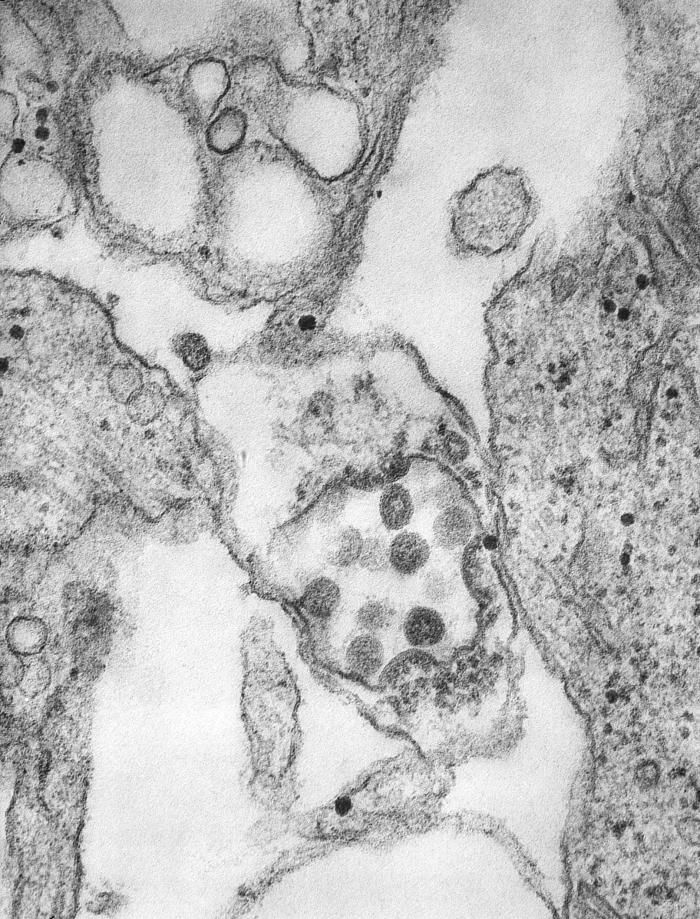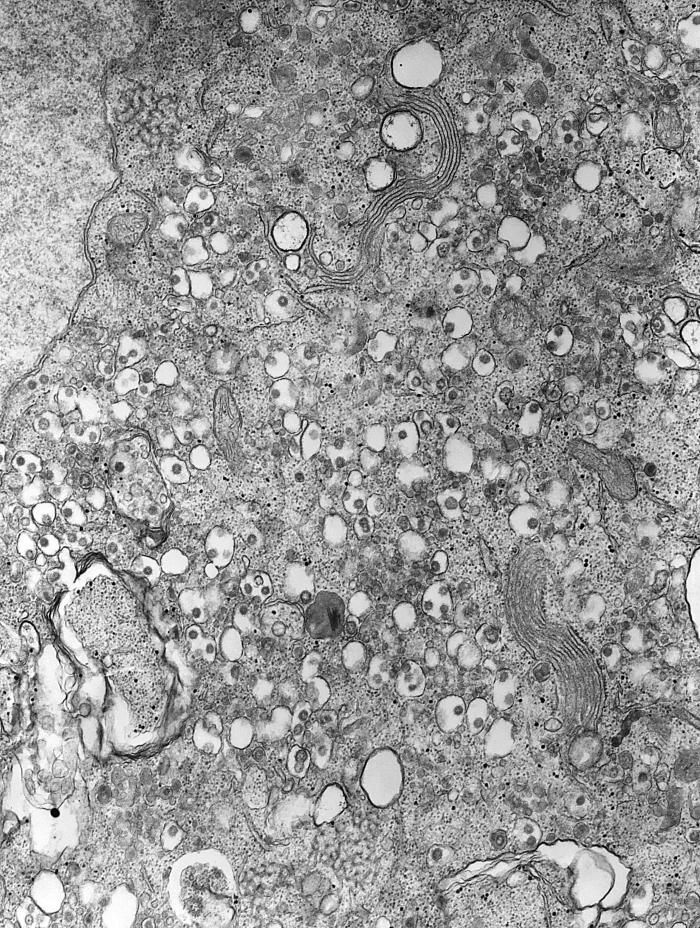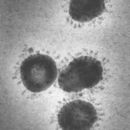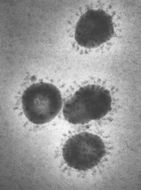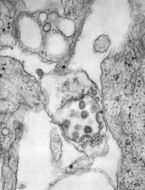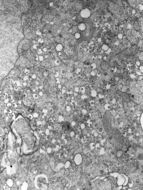-
This 1975 transmission electron micrograph (TEM) revealed the presence of a number of infectious bronchitis virus (IBV) virions, which are Coronaviridae family members, and members of the genus Coronavirus. IBV is a highly contagious pathogen, which infects poultry of all ages, affecting a number of organ systems including the respiratory and urogenital organs. IBV is categorized as a Group 3 coronavirus member, with a helical genome composed of positive-sense single-stranded RNA ((+) ssRNA). This is an enveloped virus, which means that its outermost covering is derived from the host cell membrane.Created: 1975
-
This negatively-stained 1975 transmission electron micrograph (TEM) revealed the presence of a number of human cooronavirus, HCoV-229E virions. This organism is a member of the family, Coronaviridae, and the genus Coronavirus. The coronavirus helical genome is composed of positive-sense single-stranded RNA ((+) ssRNA). This is an enveloped virus, which means that its outermost covering is derived from the host cell membrane.Created: 1975
-
This negatively-stained transmission electron micrograph (TEM) revealed the presence of numerous coronavirus virions in this tissue sample. Coronavirus is a member of the virus family, Coronaviridae, which at their core contain a positive-sense single-stranded RNA genome ((+) ssRNA). Under electronmicrographic examination, the envelope surrounding each virion is studded with a corona of points, hence the derivation of its name, which are actually proteinaceous in nature, and are outcroppings of its envelope's molecular structure.Coronaviruses infect mammals and birds with upper respiratory and gastrointestinal illnesses. The most well-known member of this virus family is the human coronavirus responsible for causing severe acute respiratory syndrome (SARS).Created: 1975


